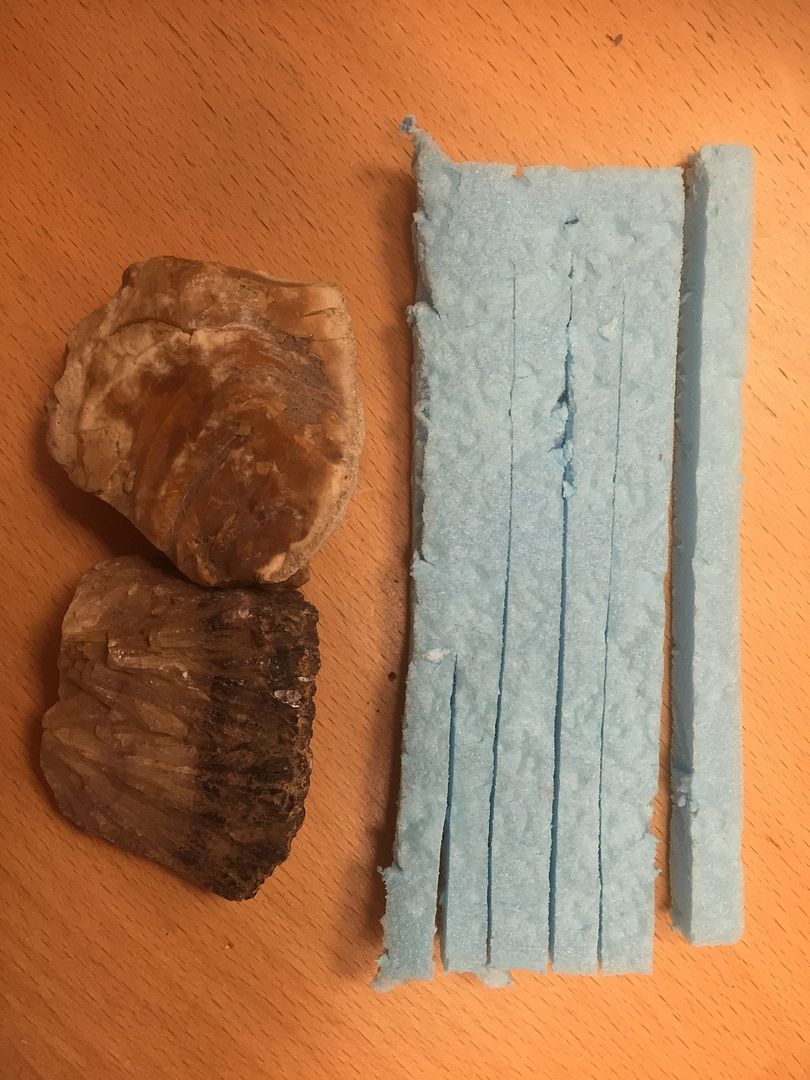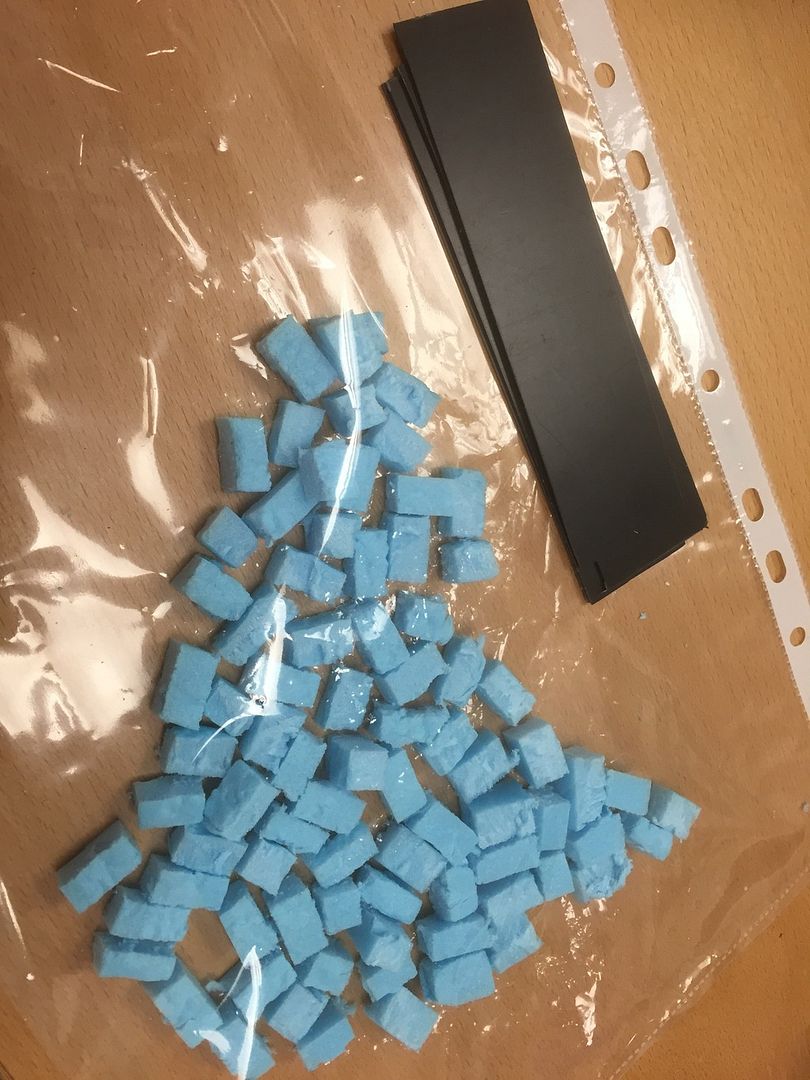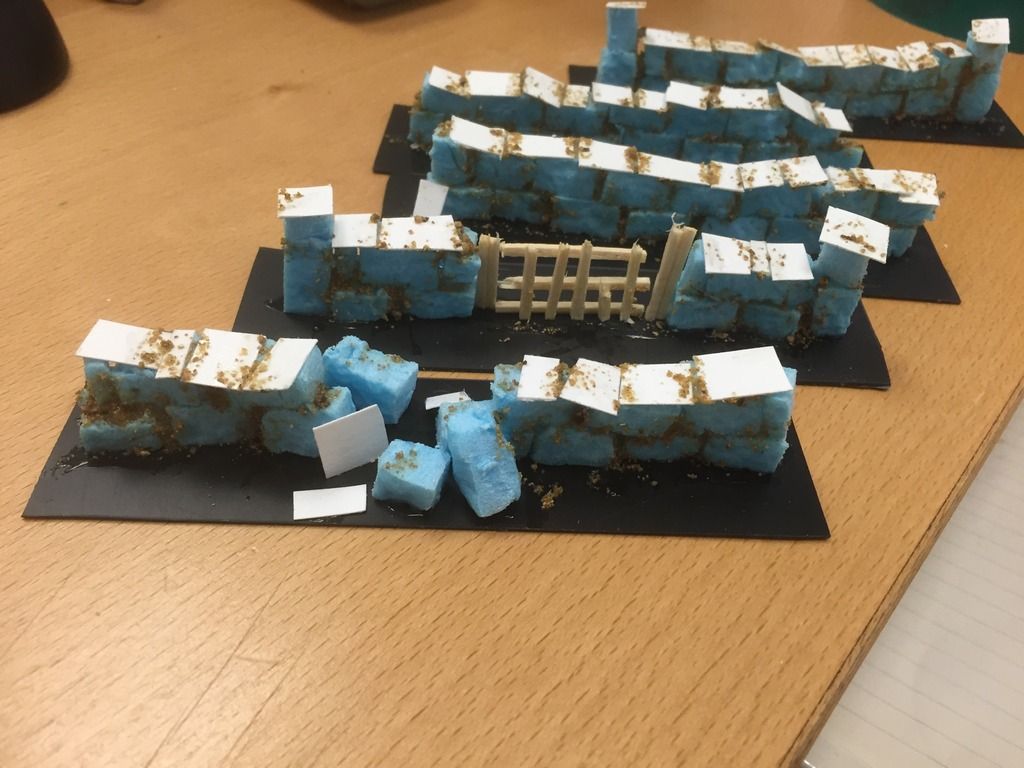A very quick tutorial on how to make very quick walls for your battlefield. All you need is:
- Base - I used plasticard, but you could use any non warping material like mdf/ply
- Extruded polystyrene - but you could use foam card as an alternative
- A couple of textured stones
- Craft knife
- PVA glue
- Sand
- Thin card
- Matchsticks
- Bitz
- Black, white, green, brown paint
- Basing materials (whatever matches your models - so I've followed my usual guide)
Step 1.
 |
| Cut the polystyrene into thin strips and then press down upon them with a textured stone to create a textured stone look |
Step 2.
 |
| Cut the strips into small blocks (in hindsight mine were a bit too big). Cut the plasticard base to your preffered size. |
Step 3.
Step 3.5.
I should really have added some bitz here, perhaps a spike or two on the wall pillars, a perched bird, a skull or discarded weapon on the floor or a signpost or such. These extra details make a huge difference as they can add to the narrative of a piece, but also are a pain in the arse to paint!
Step 4.
Painting. Unfortunately I lost my wip photo of this, but basically don't prime with a spray on undercoat or else the polystyrene will shrivel away. You could coat the walls in pva or a sealant first if you want to spray. A spray undercoat does have the advantage of better coverage, especially between the brick gaps. I painted a dilute grey acrylic over mine first and then dry brushed up to a pale grey.
To really make them pop, just add a few washes of green and brown to create a weathered appearance.
Step 5.
Basing. Again I don't have any photos of this stage, woops, but check my guide out. Obviously it's best to match the basing to how you base your models or other scenery. In addition I've added some small roots and pieces of moss to jazz up the detail and final appearance.
And ta-da, that's walls done.
I should really have added some bitz here, perhaps a spike or two on the wall pillars, a perched bird, a skull or discarded weapon on the floor or a signpost or such. These extra details make a huge difference as they can add to the narrative of a piece, but also are a pain in the arse to paint!
Step 4.
Painting. Unfortunately I lost my wip photo of this, but basically don't prime with a spray on undercoat or else the polystyrene will shrivel away. You could coat the walls in pva or a sealant first if you want to spray. A spray undercoat does have the advantage of better coverage, especially between the brick gaps. I painted a dilute grey acrylic over mine first and then dry brushed up to a pale grey.
To really make them pop, just add a few washes of green and brown to create a weathered appearance.
Step 5.
Basing. Again I don't have any photos of this stage, woops, but check my guide out. Obviously it's best to match the basing to how you base your models or other scenery. In addition I've added some small roots and pieces of moss to jazz up the detail and final appearance.
And ta-da, that's walls done.





No comments:
Post a Comment